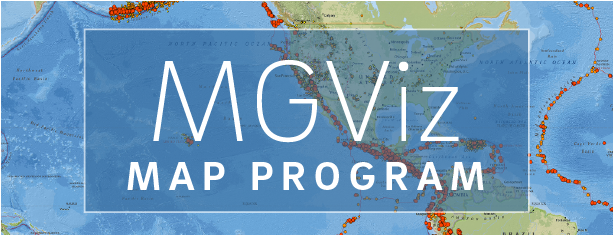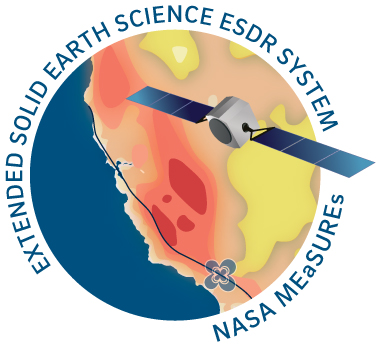Coseismic Offsets
Coseismic offsets (user: anonymous; password: e-mail address)
The weekly time series analysis includes estimates of offsets (jumps, discontinuities) that can be due to sudden coseismic motions or data artifacts due to (mostly) antenna model changes, metadata errors, changes in reference frames, or unknown sources. The offsets are modeled as (section 2.1.6):
with magnitudes g of offsets (jumps, steps, discontinuities) at epochs (section 2.5). In this parameterization, we do not distinguish between coseismic and “non-coseismic” offsets, however, they are selected and identified in the headers of the time series files (section 2.2). Furthermore, non-coseismic offsets are estimated and corrected in the various time series products, while the coseismic offsets are not corrected in order that the time series reflect only physical motions of the stations. A particular earthquake may cause significant coseismic offsets at hundreds of stations for the largest earthquakes, for example, the 2019 Mw7.1 Ridgecrest earthquake displaced almost 300 stations (by >2-3 mm to about a meter) within a radius of about 300 km from its epicenter. Non-coseismic offsets mostly correlate with changes in antenna models although not all antenna changes will result in a visible offset. There have been efforts to automatically detect offsets in displacement time series using various algorithms but these are not foolproof and some user interaction is required through the administrator interface. In order to reduce the number of offset parameters, current practice is to keep track of antenna changes and then determine visually if there is a significant offset to be estimated. Although, the IGS calibrates the absolute phase centers of all available geodetic-quality antennas, these are not perfect and may leave residual offsets in the displacement time series (see also section 2.1.5). Note that coseismic offsets may only be applied to horizontal components (N.E), while non-coseismic offsets are automatically applied to all three components. Also note, for daily displacement time series the offset is usually applied to the day after the recorded date if the antenna changed or earthquake occurred after 12:00 UTC.
Since the ATS program only scales the uncertainties of the velocity parameters, we also scale the uncertainties of all parameters including the coseismic offsets by the rms values of the parameter fit (section 2.1.6) as part of the post-ATS process (section 2.1.9). We find that this approach provides realistic one-sigma uncertainties.
References
Bock, Y., Moore, A.W., Argus, D. F., Fang, P., Jiang, S., Kedar, S., Knox, S.A. Liu, Z. & Sullivan A. (2021), Extended Solid Earth Science ESDR System (ES3): Algorithm Theoretical Basis Document: Chapter 4.2 http://sopac-csrc.ucsd.edu/wp-content/uploads/2021/08/ESESES-ATBD.pdf
Williams, S. (2003), The effect of coloured noise on the uncertainties of rates estimated from geodetic time series, Journal of Geodesy 76(9-10): 483-494.



